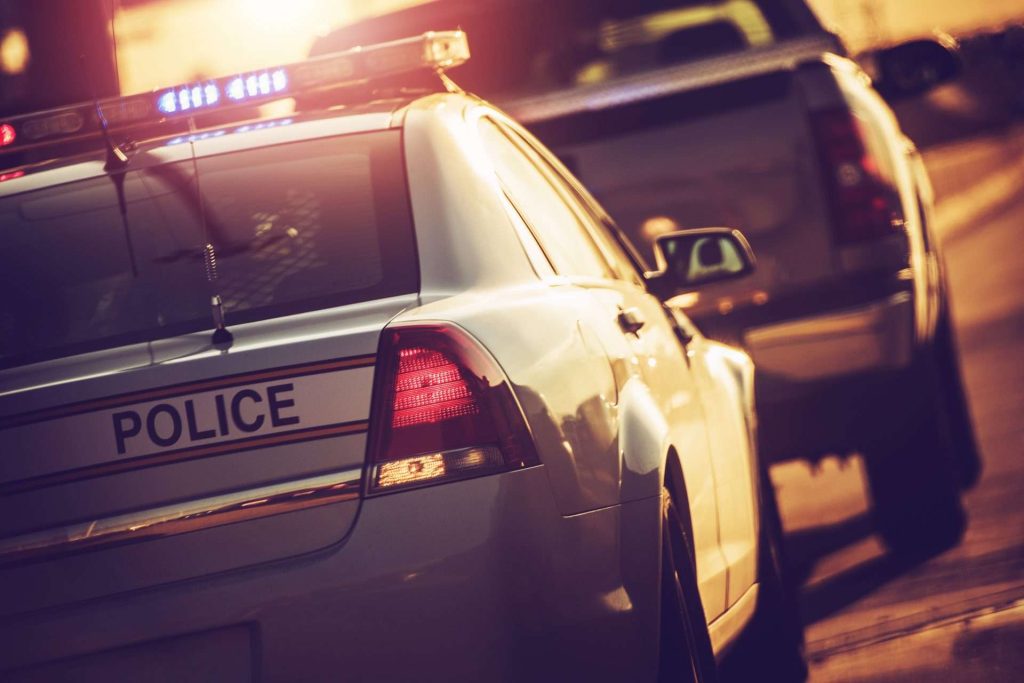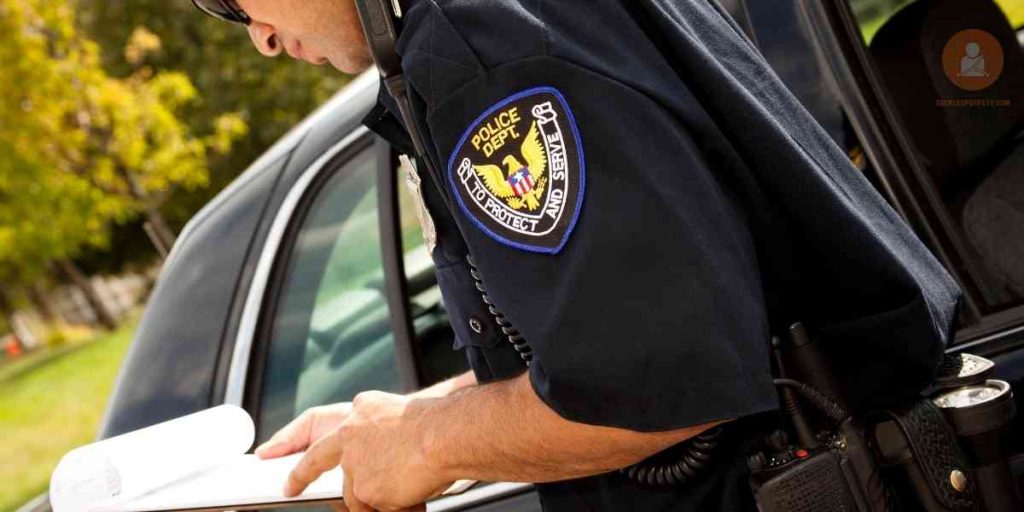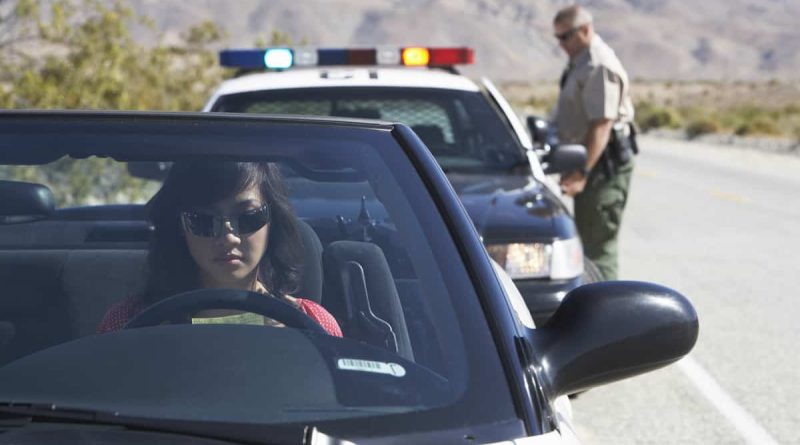What Does It Mean When a Cop Touches Your Car? The Answer May Surprise You
When it comes to traffic stops, one practice that often raises questions is police officers touching cars. Many drivers have experienced this firsthand, with an officer running their hand along the exterior of the vehicle or even touching the interior during a stop. While this may seem intrusive or unnecessary to some, it is important to understand the reasons behind this practice. By understanding why police officers touch cars during traffic stops, we can gain insight into their safety concerns, their need for information, and their efforts to establish probable cause for a search.
Understanding the reasons behind police officers touching cars
a. Safety concerns for police officers
One of the primary reasons why police officers touch cars during traffic stops is for their own safety. Traffic stops can be dangerous situations, as officers are often approaching unknown individuals in potentially high-stress situations. By touching the car, officers can leave behind their fingerprints, which can be used as evidence in case of an altercation or assault. Additionally, by running their hand along the exterior of the vehicle, officers can check for any hidden weapons or other potential threats.
b. Gathering information about the vehicle and its occupants
Another reason why police officers touch cars is to gather information about the vehicle and its occupants. By touching the exterior of the car, officers can feel for any abnormalities or modifications that may indicate illegal activity, such as hidden compartments or altered license plates. Inside the car, officers may touch surfaces to check for signs of recent drug use or other criminal activity. These touches can provide valuable information that may contribute to establishing probable cause for a search.
c. Establishing probable cause for a search
One of the key reasons why police officers touch cars during traffic stops is to establish probable cause for a search. Under the Fourth Amendment of the United States Constitution, individuals are protected against unreasonable searches and seizures. However, if an officer has reasonable suspicion that a crime has been committed or is about to be committed, they may have the authority to conduct a search. By touching the car and gathering information, officers can build a case for probable cause, which may include the presence of drugs, weapons, or other contraband.
What are the different types of car touches by police officers?

a. Exterior touches
Exterior touches involve police officers running their hand along the outside of the vehicle during a traffic stop. This can include touching the doors, windows, trunk, and other parts of the car. By doing so, officers can check for any abnormalities or modifications that may indicate illegal activity. For example, they may feel for hidden compartments or altered license plates. Exterior touches can also help officers gather information about the vehicle’s condition and potential safety hazards.
b. Interior touches
Interior touches involve police officers touching surfaces inside the vehicle during a traffic stop. This can include touching the dashboard, seats, and other areas where evidence may be present. By doing so, officers can check for signs of recent drug use or other criminal activity. For example, they may feel for residue or smell for odors associated with drugs. Interior touches can provide valuable information that may contribute to establishing probable cause for a search.
c. Use of K-9 units
In addition to manual car touches, police officers may also use K-9 units to assist in searching vehicles during traffic stops. These specially trained dogs are able to detect the presence of drugs or other contraband through their sense of smell. By walking around the exterior of the vehicle with a K-9 unit, officers can determine if there is probable cause for a search based on the dog’s reaction. If the dog alerts to the presence of drugs, it can provide additional justification for a more thorough search.
How do police officers use car touches to search for contraband?
a. Probable cause and reasonable suspicion
In order to conduct a search of a vehicle during a traffic stop, police officers must have probable cause or reasonable suspicion that a crime has been committed or is about to be committed. Car touches can play a role in establishing this probable cause. For example, if an officer feels a hidden compartment or smells the odor of drugs during an exterior touch, it may provide the necessary justification for a search. Similarly, if an officer touches the interior of the car and finds drug residue or other evidence of criminal activity, it can contribute to establishing probable cause.
b. Use of technology such as drug-sniffing dogs and X-ray machines
In addition to manual car touches, police officers may also use technology to assist in searching for contraband during traffic stops. One common tool is the use of drug-sniffing dogs, as mentioned earlier. These dogs are trained to detect the presence of drugs through their sense of smell and can alert officers to the potential presence of contraband. Another tool that may be used is an X-ray machine, which can be used to scan the interior of a vehicle for hidden compartments or other suspicious items. These technological advancements can help officers conduct more thorough searches and increase their chances of finding illegal substances or other evidence.
The legal implications of police officers touching cars during traffic stops
a. Fourth Amendment protections against unreasonable searches and seizures
The Fourth Amendment of the United States Constitution protects individuals against unreasonable searches and seizures by law enforcement. This means that police officers must have a valid reason, such as probable cause or reasonable suspicion, in order to conduct a search. Car touches during traffic stops can potentially infringe upon these constitutional rights if they are conducted without proper justification. It is important for officers to be aware of these legal implications and ensure that their actions are within the bounds of the law.
b. Case law on car searches and car touches
Over the years, there have been numerous court cases that have shaped the legal landscape surrounding car searches and car touches by police officers. One landmark case is Terry Ohio (1968), in which the Supreme Court established the concept of “stop and frisk.” This case held that police officers may conduct a pat-down search of an individual if they have reasonable suspicion that the person is armed and dangerous. This ruling has been used to justify car touches as a means of ensuring officer safety during traffic stops.
Another important case is United States Ross (1982), in which the Supreme Court ruled that police officers may search a vehicle without a warrant if they have probable cause to believe that contraband or evidence of a crime is present. This ruling has been used to justify car searches based on information gathered through car touches, such as the presence of hidden compartments or drug residue.
What should you do if a police officer touches your car during a traffic stop?
a. Remain calm and cooperative
If a police officer touches your car during a traffic stop, it is important to remain calm and cooperative. Follow the officer’s instructions and avoid any sudden movements that may be perceived as threatening. Remember that the officer is likely conducting the touch for their own safety and to gather information about the vehicle and its occupants. By remaining calm and cooperative, you can help ensure a smooth interaction and minimize any potential misunderstandings or conflicts.
b. Know your rights
While it is important to cooperate with law enforcement during a traffic stop, it is also important to know your rights. Familiarize yourself with the Fourth Amendment protections against unreasonable searches and seizures, as well as any relevant state laws or regulations. If you believe that your rights are being violated, you have the right to remain silent and consult with an attorney. However, it is important to exercise these rights in a respectful manner and avoid escalating the situation.
c. Document the interaction
If you feel that your rights have been violated during a traffic stop, it can be helpful to document the interaction. This can include taking notes about the officer’s actions and statements, as well as recording any video or audio evidence if it is legal to do so in your jurisdiction. This documentation can be useful if you decide to file a complaint or take legal action against the officer or the department. However, it is important to prioritize your safety and the safety of others during the traffic stop, so use your judgment when deciding whether or not to document the interaction.
The impact of car touches on racial profiling and police brutality
a. Disproportionate targeting of minority drivers
One of the concerns surrounding car touches by police officers during traffic stops is the potential for racial profiling. Studies have shown that minority drivers are disproportionately targeted for traffic stops and are more likely to experience aggressive or intrusive tactics, such as car touches. This can contribute to a sense of mistrust and fear within minority communities and further strain the relationship between law enforcement and the community.
b. Use of excessive force during car searches
Another concern is the potential for excessive force during car searches. In some cases, police officers may use unnecessary or excessive force when conducting a search, which can result in physical harm or injury to the driver or passengers. This can be particularly concerning when combined with racial profiling, as it can perpetuate a cycle of violence and discrimination.
The role of technology in reducing the need for car touches during traffic stops
a. Use of body cameras and dash cameras
One way to address concerns about car touches during traffic stops is through the use of technology, such as body cameras and dash cameras. These devices can provide an objective record of the interaction between law enforcement and individuals during a traffic stop. By capturing both audio and video footage, they can help ensure transparency and accountability, as well as provide valuable evidence in case of any disputes or complaints.
b. Development of non-invasive search methods
Another way to reduce the need for car touches during traffic stops is through the development of non-invasive search methods. For example, advancements in technology have led to the development of portable X-ray machines that can scan the interior of a vehicle without the need for physical contact. Similarly, advancements in drug detection technology have led to the development of handheld devices that can quickly and accurately detect the presence of drugs without the need for manual searches. These non-invasive search methods can help protect individual rights while still allowing law enforcement to effectively carry out their duties.
The importance of educating the public about the reasons behind car touches by police officers

a. Building trust between law enforcement and the community
One of the key reasons why it is important to educate the public about the reasons behind car touches by police officers is to build trust between law enforcement and the community. By providing individuals with a better understanding of why these practices are used, it can help alleviate concerns and reduce misunderstandings during traffic stops. This can ultimately lead to more positive interactions and improved relationships between law enforcement and the community.
b. Reducing misunderstandings and conflicts during traffic stops
Another reason why education is important is to reduce misunderstandings and conflicts during traffic stops. When individuals are aware of why police officers may touch their cars, they are less likely to feel threatened or violated by these actions. This can help prevent tense or confrontational situations from escalating and potentially leading to unnecessary use of force or other negative outcomes.
Conclusion and key takeaways
In conclusion, police officers touching cars during traffic stops serves important safety and investigative purposes. By understanding the reasons behind this practice, we can gain insight into their concerns for officer safety, their need for information, and their efforts to establish probable cause for a search. However, it is crucial that these car touches are conducted within the bounds of the law and with respect for individual rights.
Education and technology play key roles in improving the effectiveness and fairness of traffic stops. By educating the public about the reasons behind car touches, we can build trust between law enforcement and the community, reduce misunderstandings, and prevent conflicts during traffic stops. Additionally, the use of technology such as body cameras and non-invasive search methods can help ensure transparency, accountability, and the protection of individual rights.
Ultimately, it is important for both law enforcement and individuals to be aware of their rights and responsibilities during traffic stops. By working together and respecting each other’s rights, we can create a safer and more just society.
